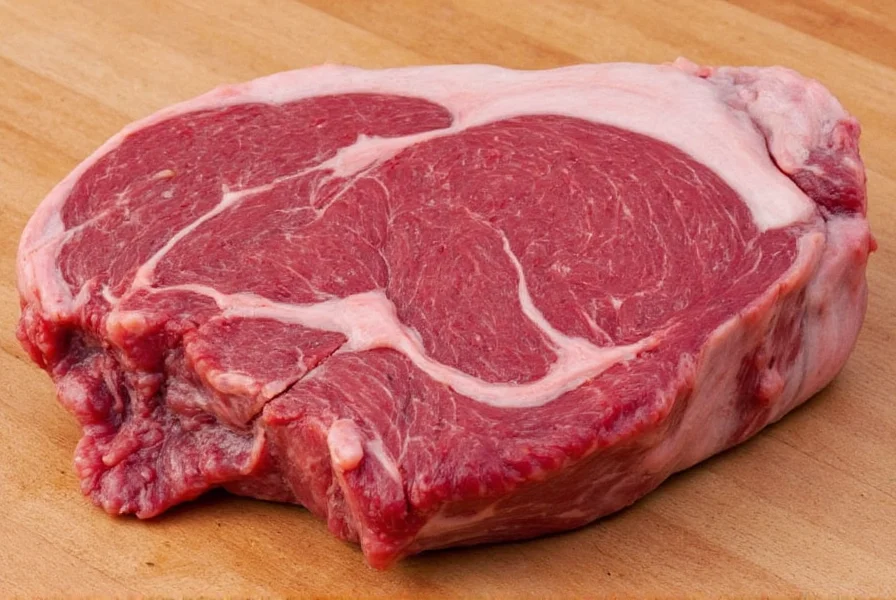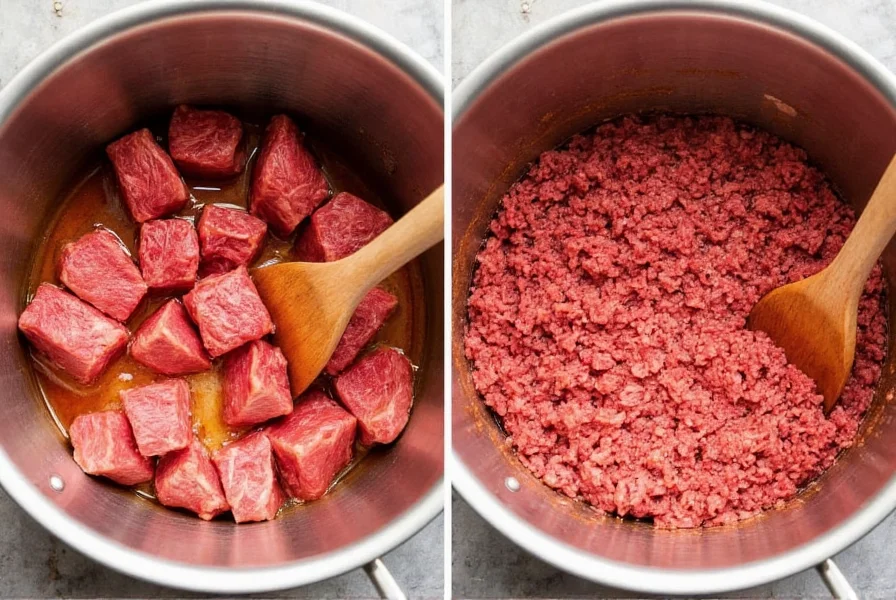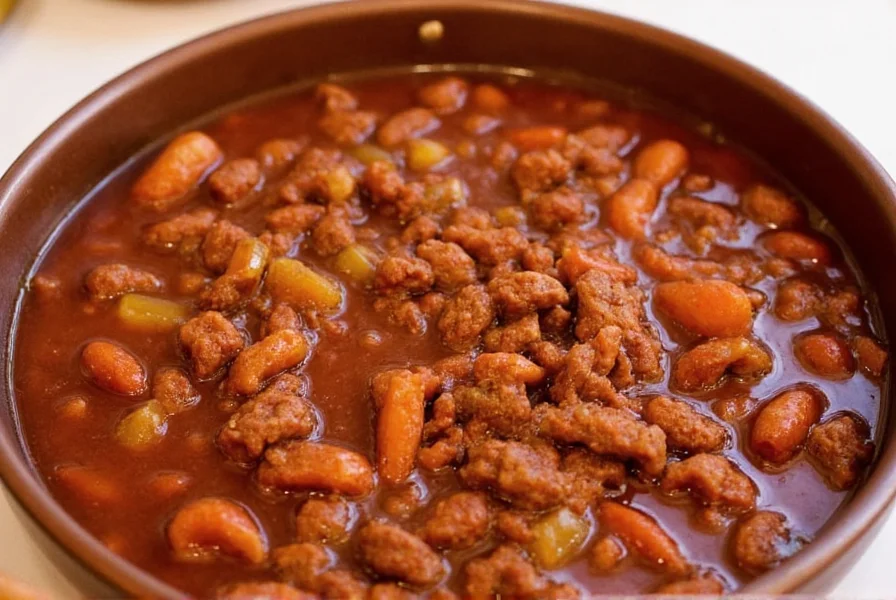The best beef for chili is well-marbled chuck roast, which contains the ideal 20-30% fat content and abundant connective tissue that breaks down during slow cooking to create rich, tender meat with deep flavor. For authentic Texas-style chili, coarsely ground chuck or cubed chuck roast delivers superior results compared to leaner cuts that become dry and stringy.
When crafting the perfect pot of chili, selecting the right beef isn't just a detail—it's the foundation of flavor and texture that makes or breaks your dish. Many home cooks default to ground beef without considering how different cuts transform during the slow simmering process essential to great chili. Understanding meat science and cooking techniques can elevate your chili from ordinary to extraordinary.
Why Beef Selection Matters for Chili
Chili's magic happens through slow cooking, where connective tissues break down into gelatin, creating that signature rich mouthfeel. Lean cuts like sirloin lack sufficient marbling and collagen, resulting in dry, stringy meat. The best beef for chili balances fat content, connective tissue, and flavor compounds that meld with spices during extended cooking.

Top Beef Cuts for Chili: A Detailed Comparison
Not all beef responds equally to chili's long simmer. Here's how the top contenders perform:
| Beef Cut | Fat Content | Texture After Cooking | Flavor Profile | Best For |
|---|---|---|---|---|
| Chuck Roast | 20-30% | Tender, succulent shreds | Rich, beefy depth | All chili styles, especially Texas red |
| Brisket (Point) | 25-35% | Melt-in-mouth tenderness | Intense, smoky notes | Smoked chili variations |
| Short Ribs | 30-40% | Buttery, falling-apart texture | Deep umami richness | Gourmet or competition chili |
| Ground Beef (80/20) | 20% | Firm crumbles | Standard beef flavor | Quick chili, Cincinnati style |
| Rump Roast | 10-15% | Can become dry | Milder beef flavor | Budget-conscious cooking |
Chuck Roast: The Undisputed Champion for Chili
When considering what kind of beef is best for chili, chuck roast consistently outperforms other options. This shoulder cut contains the perfect balance of marbling (20-30% fat) and connective tissue that transforms during slow cooking. As collagen breaks down into gelatin over 2-3 hours of simmering, it creates that luxurious mouthfeel characteristic of award-winning chili.
For optimal results when using chuck roast for chili, cut it into 1-inch cubes rather than grinding. This technique preserves texture while allowing flavors to penetrate. Sear the cubes thoroughly before adding liquids—this Maillard reaction creates complex flavor compounds that ground beef simply can't match. The best beef cut for chili recipe often features this searing step as non-negotiable.
Ground Beef vs. Cubed Beef: The Great Chili Debate
Many wonder whether chuck roast vs ground beef for chili makes a significant difference. The answer lies in texture development. Ground beef's increased surface area absorbs more liquid during cooking, often resulting in a homogenous, sometimes mushy consistency. Cubed chuck maintains distinct meat pieces that provide textural contrast against beans and vegetables.
That said, high-quality 80/20 ground chuck makes an excellent option for weeknight chili. Look for freshly ground beef rather than pre-packaged options, which often contain lean trimmings that dry out during cooking. The best affordable beef for chili often comes from your butcher grinding chuck roast to order.

Advanced Techniques for Perfect Chili Beef
Professional chili makers employ several techniques to maximize beef flavor:
- Dry brining: Salt chuck cubes 24 hours before cooking draws out moisture, then reabsorbs it with enhanced flavor
- Rendering fat first: Cook down some beef fat before adding meat to create a flavor base
- Acid balance: Add tomatoes or vinegar midway through cooking to prevent toughness
- Temperature control: Maintain 180-200°F (82-93°C) for optimal collagen breakdown without boiling meat dry
Budget-Friendly Beef Options Without Sacrificcing Quality
While short ribs and premium brisket create exceptional chili, they come with premium price tags. The best affordable beef for chili remains chuck roast, which typically costs 30-50% less than comparable marbled cuts. Consider these value strategies:
- Blend 70% chuck with 30% short rib trimmings for enhanced flavor at lower cost
- Ask your butcher for "chili mix"—often discounted cuts perfect for slow cooking
- Freeze portions of bulk-purchased chuck for year-round chili making
- Use beef bone broth instead of water to amplify meat flavor with less actual beef
Common Beef Selection Mistakes to Avoid
Even experienced cooks make these errors when choosing beef for homemade chili:
- Using lean cuts: Round or sirloin lack necessary fat, resulting in dry chili
- Over-trimming fat: Removing visible marbling eliminates flavor carriers
- Under-searing: Skipping proper browning misses crucial flavor development
- Boiling instead of simmering: High heat makes meat tough rather than tender
- Adding meat too late: Beef needs minimum 2 hours to properly break down
Final Recommendations for Chili Excellence
For the most authentic chili experience, cubed chuck roast remains the gold standard. Its ideal fat-to-meat ratio and abundant connective tissue create that signature rich texture and deep flavor profile that defines championship chili. When time is limited, high-quality 80/20 ground chuck provides excellent results with less hands-on time.
Remember that how you prepare your beef matters as much as the cut itself. Proper searing, controlled simmering, and adequate cooking time transform even modest cuts into chili perfection. The best beef for chili isn't necessarily the most expensive—it's the cut that best serves your cooking style and desired texture.











 浙公网安备
33010002000092号
浙公网安备
33010002000092号 浙B2-20120091-4
浙B2-20120091-4